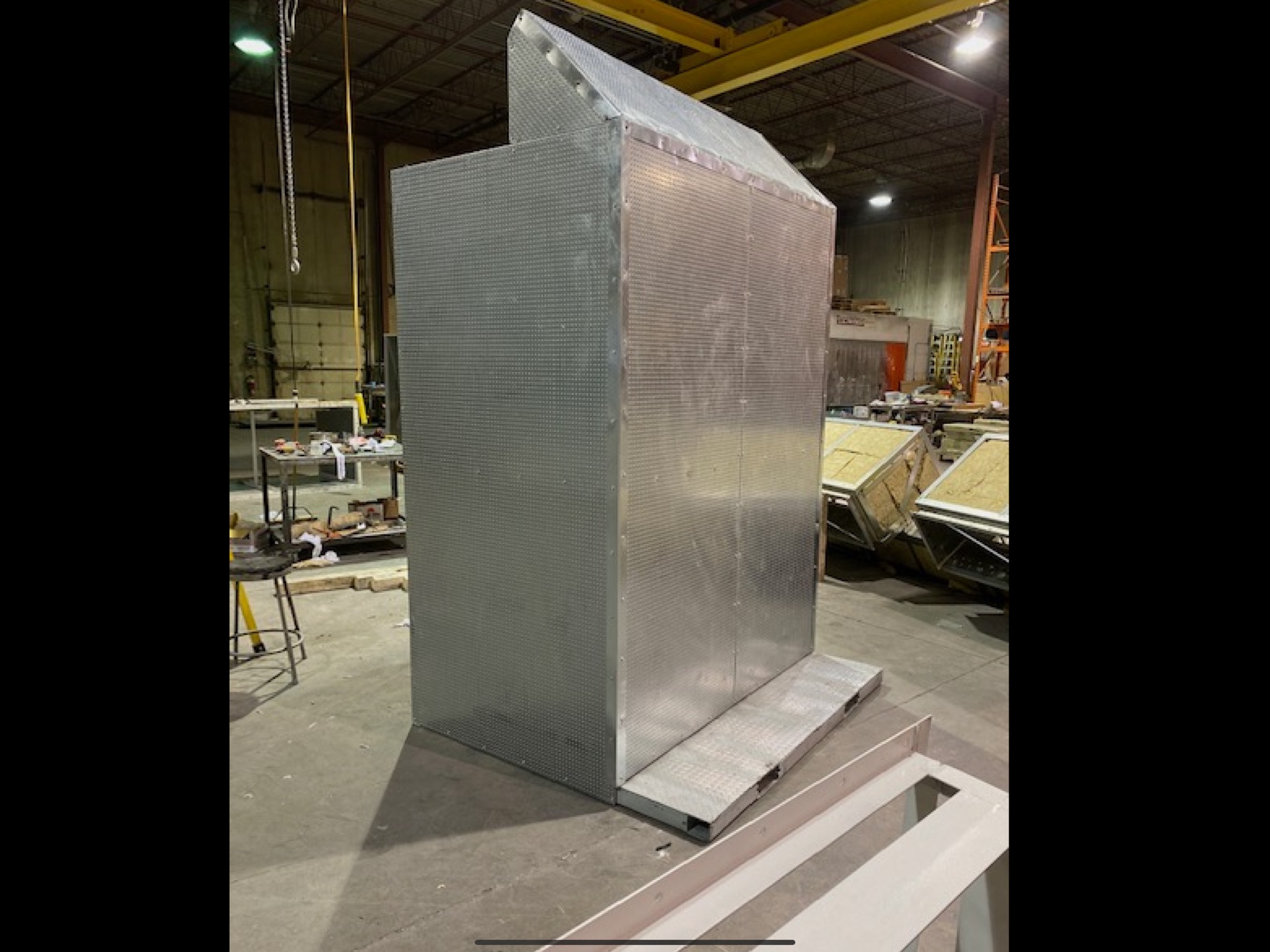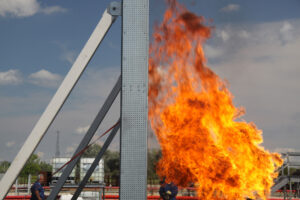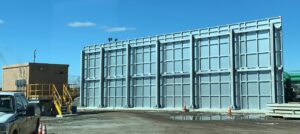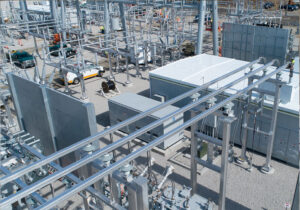Industrial safety is a paramount concern in today’s manufacturing and processing industries. One of the key aspects of ensuring safety in these environments is the proper management of potential explosion hazards. Fireproof containers play a crucial role in this regard, serving as a protective barrier against explosive materials and gases. In this blog, we will delve into the importance of explosion-proof enclosures and explore their applications in various industrial settings.
What Are Explosion-Proof Enclosures?
Before we dive into their importance, let’s define what explosion-proof enclosures are. These specialized enclosures are designed to withstand and contain explosions that may occur within them. They are constructed in a way that prevents sparks, arcs, or heat from escaping the enclosure and igniting flammable substances in the surrounding atmosphere. This containment helps prevent catastrophic accidents and ensures the safety of personnel and equipment.
The Importance of Explosion-Proof Enclosures
- Protecting Personnel
The primary purpose of explosion-proof enclosures is to safeguard human lives. In industries where volatile gases, dust, or chemicals are present, any spark or explosion can have devastating consequences. Explosion-proof enclosures are meticulously engineered to prevent explosions from escaping, thus shielding workers from harm.
- Safeguarding Equipment
Explosion-proof enclosures not only protect people but also safeguard critical equipment and machinery. Explosions can cause extensive damage to valuable assets, leading to costly downtime and repairs. These enclosures contain explosions, reducing the risk of equipment damage and minimizing production interruptions.
- Compliance with Regulations
Many industrial sectors are subject to strict safety regulations and codes. Explosion-proof enclosures are designed in accordance with these regulations, ensuring that businesses remain compliant. Compliance not only prevents legal issues but also demonstrates a commitment to safety, which can enhance a company’s reputation.
- Mitigating Environmental Impact
Explosions can release hazardous substances into the environment, posing a significant threat to ecosystems. By containing explosions, these enclosures help prevent environmental disasters and minimize the ecological impact of industrial accidents.
Applications of Explosion-Proof Enclosures
Explosion-proof enclosures find applications across various industries where explosive materials or gases are present. Here are some key sectors where these enclosures are indispensable:
- Oil and Gas Industry
The oil and gas sector is one of the most prominent users of explosion-proof enclosures. Refineries, natural gas, drilling rigs, and storage facilities often handle flammable gases and liquids. These enclosures are used to protect critical equipment such as control panels, switches, and electrical systems.
- Chemical Manufacturing
Chemical manufacturing facilities deal with volatile substances that can lead to explosions if not handled properly. Explosion-proof enclosures are essential for protecting reactors, mixers, and storage tanks.
- Mining
In the mining industry, explosive gases like methane are frequently encountered in underground mines. Explosion-proof enclosures are installed to safeguard electrical systems and equipment used in these hazardous environments.
- Pharmaceuticals
Pharmaceutical manufacturing processes often involve the use of flammable solvents and materials. Explosion-proof enclosures are essential for ensuring the safety of personnel and protecting sensitive pharmaceutical equipment.
- Food Processing
Even in seemingly benign industries like food processing, certain conditions can lead to combustible dust or gases. Explosion-proof enclosures are used to protect electrical components in these facilities, reducing the risk of fires or explosions.
- Aerospace
Aerospace facilities utilize explosion-proof enclosures to protect electronic systems in close proximity to flammable fuels and chemicals, ensuring the safe operation of aircraft and spacecraft.
- Petrochemical Plants
Petrochemical plants handle volatile compounds and gases. Explosion-proof enclosures are crucial for maintaining safety in various processes, including storage, refining, and transportation of petrochemicals.
Key Features of Explosion-Proof Enclosures
Explosion-proof enclosures are critical components in industrial safety, designed to contain and mitigate the impact of explosions. These specialized enclosures possess several key features that make them effective in safeguarding personnel, equipment, and the environment. In this section, we will explore these essential features in detail.
- Flame Paths
Inside an explosion-proof enclosure, flame paths are strategically incorporated into the design. These flame paths serve a crucial role in managing explosions. They cool and redirect any sparks or flames that may occur during an explosion, preventing them from reaching the external environment.
- Certification Standards
One of the most important features of explosion-proof enclosures is their compliance with certification standards. These standards are established by regulatory bodies to ensure that the enclosures meet specific safety requirements. Certifications provide assurance that the enclosures have been thoroughly tested and are capable of withstanding explosion-related risks.
- Corrosion Resistance
Many industrial environments are harsh and corrosive, which can weaken materials over time. Explosion-proof enclosures are often designed to resist corrosion. This feature ensures the longevity of the enclosure and maintains its structural integrity, even in challenging conditions.
- Compatibility with Hazardous Environments
Explosion-proof enclosures are tailored to suit various hazardous environments. They are available in different configurations to accommodate specific industrial settings, such as those with flammable gases, dust, or volatile chemicals. This adaptability ensures that the enclosures effectively mitigate explosion risks in diverse applications.
- Ease of Maintenance
While explosion-proof enclosures are built to be rugged and resilient, they still require regular maintenance to remain effective. Some enclosures are designed with features that facilitate easy inspection and maintenance, ensuring that any issues can be promptly addressed to uphold safety standards.
- Diverse Sizing Options
Industrial applications vary widely, and so do the size requirements for explosion-proof enclosures. These enclosures come in a range of sizes and configurations, allowing businesses to select the most suitable options for their specific needs. This versatility ensures that enclosures can be effectively integrated into various industrial processes.
- Compliance Documentation
In addition to certification standards, explosion-proof enclosures often come with detailed compliance documentation. This documentation provides information on the enclosure’s design, testing, and performance characteristics. It serves as valuable documentation for regulatory agencies and safety audits.
- User-Friendly Design
Safety should never come at the expense of usability. Sinisi Solutions offers unique enclosures that are designed with user-friendly features such as easily accessible controls, transparent windows, modular capabilities, and ergonomic handles. These design elements enhance the usability of the enclosures without compromising safety.
Explosion-proof enclosures serve as the last line of defense against explosive incidents that could result in loss of life, equipment damage, environmental disasters, and legal repercussions. Visit https://firebarrierexperts.com/fireproof-junction-splice-boxes/ for these enclosures to protect their personnel, equipment, and reputation.




